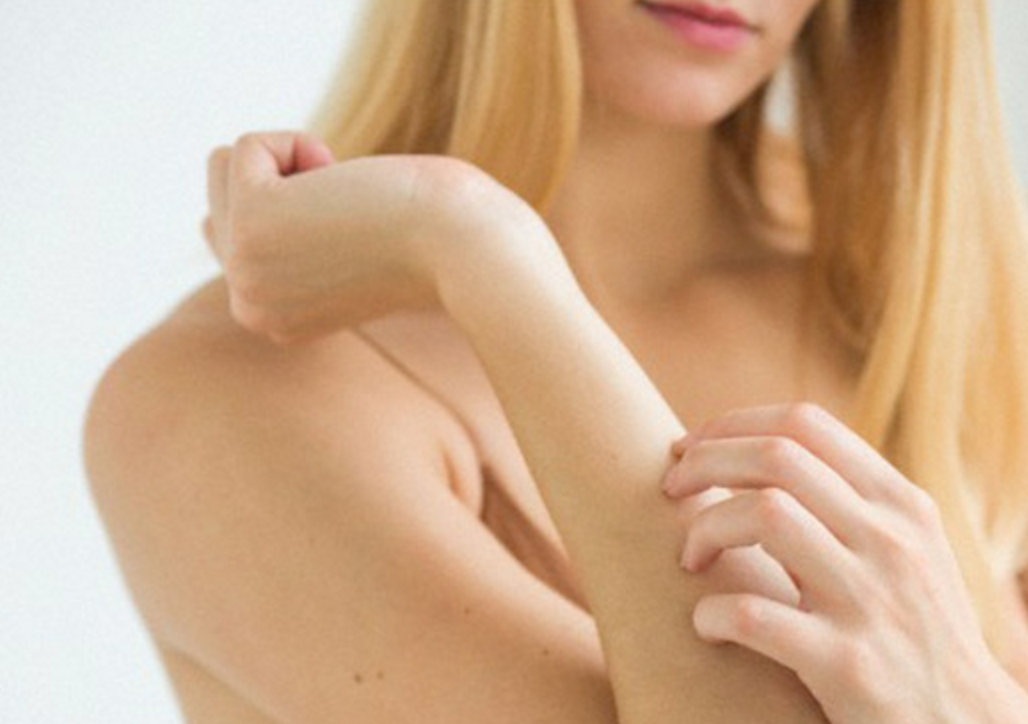One of the most common skin conditions that is often the source of embarrassment and body-conscious behavior is psoriasis. This is a skin condition that changes the way cells form and divide, which results in an unusual build-up, making thick patches and roughness appear on the surface that is difficult to hide or mitigate. Psoriasis also causes the affected area to be dry, irritated, and even painful.
Psoriasis symptoms and appearance can be inconsistent over a long history of experience, it can also vary wildly from person to person. There is no cure for it, but there are many different ways of treating psoriasis, with varying degrees of success.
Here are some of the most common symptoms:
- Inflamed, red spots
- Scaly, rough skin
- Irritating and can bleed when scratched
- Swollen around area and/or stiffness
Types of Psoriasis
While psoriasis can be different from person to person, there are some common locations and behaviors of symptoms that make it easy to categorize. These are the most common types that can be identified:
Plaque Psoriasis
This is what most people identify because it appears in some of the most visible places on the body, although it is capable of appearing anywhere, even inside the mouth or around your genitals. The visible redness and dryness of skin doesn’t respond well to most lotions, which is what motivates many to ask their doctor or family/friends about it.
Nail Psoriasis
When psoriasis gets under the nail and affects the growth and health of either your fingernails or toenails, it can begin to become a real problem when the nail becomes loose and possibly break off.
Scalp Psoriasis
This is often mixed up with standard dandruff, they both share similar symptoms, but scalp psoriasis only affects the areas it appears, causing the dry, itchy, and flaky skin. The scalp is sensitive, so psoriasis is often accompanied with a dull and/or burning pain.
Guttate Psoriasis
Found mostly on kids and teens, this type of psoriasis is borne from bacterial infections and are only present as tiny spots, usually on your extremities. They don’t last nearly as long as most experiences with psoriasis and usually go away by themselves after the infection is gone.
Inverse Psoriasis
Identified as soft patches of inflamed skin in moist areas of the body. This also happens to be the most sensitive areas, i.e. armpits, genitals, under breasts, under feet. It can appear regardless of hygiene care, but is most frequent with those who experience fungal infections.
Rare Psoriasis Conditions
Pustular psoriasis is a more severe version of psoriasis that causes blisters in an allergic-like reaction. It is accompanied by immune system responses of fever, nausea, and diarrhea.
Erythrodermic psoriasis is an even rarer form that can cause the entire body to be inflamed with extremely uncomfortable itching and burning.
Psoriatic arthritis affect the body exactly as it sounds: painful joints, swelling, stiffness, along with the common psoriasis skin inflammation. This form of arthritis does not cause permanent damage.
DISCLAIMER: The medical information on this site is provided as an information resource only, and is not to be used or relied on for any diagnostic or treatment purposes. This information is not intended to be patient education, does not create any patient-physician relationship, and should not be used as a substitute for professional diagnosis and treatment.


